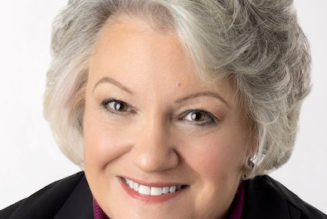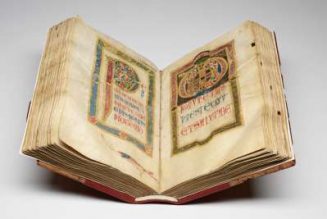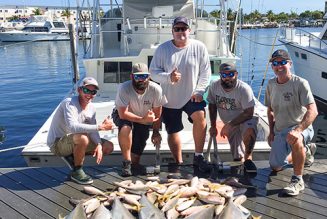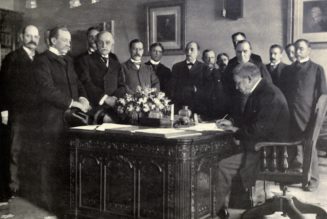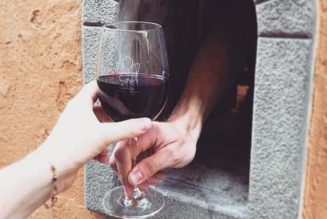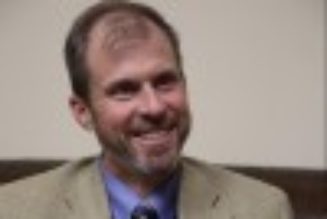
Jesus tells three different stories about sin and mercy this Sunday, the 24th Sunday in Ordinary Time Year C.
Together, they tell us what makes human souls unique — and how sin thwarts our very identity.
The first icon of sin and the soul is the sheep cut off from others, helpless and vulnerable.
“What man among you having a hundred sheep and losing one of them would not leave the ninety-nine in the desert and go after the lost one until he finds it?” asks Jesus. “And when he does find it, he sets it on his shoulders with great joy.”
The herding instinct is famously strong in sheep. A sheep apart from its flock is not an independent animal making its way in the world — it is a stressed, anxious animal in deadly peril. It is easy pickings for predators since its only means of defense is to stay close to the herd. Often, a lost sheep will simply lie down, frozen from fear.
A shepherd looking for the sheep can’t really call out or get the sheep’s attention — he has to be on constant lookout to actually see the lost sheep. And the sheep isn’t likely to follow the shepherd once it’s found. He has to carry it.
Human beings are “herding” animals too. Our souls are made to be in communion with others.
Aristotle called us “the social animal.” In Genesis God says, “It is not good for man to be alone.” We are hard-wired to be in community and only make sense “embedded” in relationships. When we go off by ourselves, we are in peril — stressed, anxious and addicted to whatever will numb the pain of loneliness.
But that’s what sin is: A choice for selfishness that isolates us from others and thus from our deepest meaning. Pride, envy, anger, sloth, gluttony and lust all turn us inward and begin the project of creating a world of our own. And they never lead to happiness, because the real world is God’s and our soul finds its only consolation in the loving gift of ourselves to others, which is a participation in God’s self gift.
God goes out looking for us, combing the fields and trees, actively searching until he finds us. For the sinners of his time, that meant he sits and eats with them. For us, it means he reaches out through the Church and feeds us with Scripture and sacraments.
Then, like the “footprints in the sand” story he carries us back. St. Ambrose put it this way: “The shoulders of Christ are the arms of the cross. There, I laid down my sins. I rested on the neck of that noble yoke.”
Importantly, Jesus doesn’t simply carry us to safety and set us up to be successful on our own, out of danger. He carries us back to the flock. He wants us to thrive the only way we can: Connected with others who are connected to him.
The second icon of sin and the soul is the coin lost in the darkness, useless and squandered, unable to be spent.
In the Parable of the Lost Coin, Jesus says, “What woman having ten coins and losing one would not light a lamp and sweep the house, searching carefully until she finds it? And when she does find it, she calls together her friends and neighbors and says to them, ‘Rejoice with me because I have found the coin that I lost.’”
The details in the story suggest that this woman lives in poverty. The loss of the coin is a significant blow to her livelihood and future. The kind of house she would have in the ancient world would most likely have been a narrow, one-room structure with no windows. In order to light the house and search for her coin, she would have had to open the door, light a lantern and search not just by sight, but by feel. Her solution is to sweep the house, hoping to feel the coin drag against the floor.
Our souls are like that: a pattern that identifies us as God’s, ready to be spent.
The coin in this story would have been stamped with a royal image — and our souls, too, are stamped with the image of the King of Heaven and earth. If our soul is like a coin, then it has great intrinsic value that makes it desirable in and of itself.
God sees us that way. We are “the only creature on earth that God has willed for its own sake.” Each of us has unique value in God’s eyes — making us worth a great, arduous effort to recover us so that we can spend our lives for the greater good.
The woman in the story is the Church, God’s instrument on earth. When the Church acts as she should, she lights a beacon in her teaching and reaches for us relentlessly, sweeping in anyone she can find in hopes of getting each of us back, because we mean everything to her. A Church that no longer seeks the lost is no longer the Church.
A third icon of sin and the soul is the Prodigal Son, breaking communion with the Father who says “Everything I have is yours.”
When we heard the Prodigal Son story last Lent, it was helpful to consider how impertinent it was for the youngest son to demand his share of his inheritance before his father had died, and to go far from his family’s reach, like a sheep far from its flock.
But now, consider the situation from the father’s perspective. There is no clear reason a father would have to give his son his inheritance early like this father does. The son has no “right” to his father’s property while the father still lives. The father’s abdication of his property to his son mirrors the way God treats us. Rather than force us to stay in a relationship with him, he lets us come or go at will. We are free to to do his will or to oppose his will — the decision is ours.
In the same way, a sinner freely cuts himself off from his own fundamental meaning.
Of all the creatures on earth, only the human person is “able to know and love his creator.” We are made in the image of God, who is love, and realize our highest good when we love.
When we love, we are doing something no other animal can do: We become like God. And when we sin we do what no other animal can do: We subvert our own deepest identity.
“To be in a realm of lustful passion is the same as to be in the realm of darkness, and that is the same as to be far away from your face,” St. Augustine said of the Prodigal Son. The effort to find fulfillment apart from God is exhausting. “He began to want and to suffer starvation, because nothing is enough for prodigal enjoyment.”
So those are the three images of sin and the soul that Jesus presents. But there is one image that can take the place of all of them: The heart.
Our heart is made to love and be loved, and the heart represents “the depth of our being, where a person decides for or against God.”
“Blessed are the pure of heart, for they shall see God,” Jesus says. God is in all things by his presence, essence and power and he is imaged in every person and so the pure in heart see him everywhere.
When we blot out his presence by putting something else in his place, like the Israelites in the desert in Sunday’s First Reading, our hearts go dark. When we become “a blasphemer and a persecutor and arrogant,” like Paul in the Second Reading, our hearts turn to stone.
The only way to restore our very identities is to pray with Sunday’s Psalm, “A clean heart create for me, O God, and a steadfast spirit renew within me.”
In Sunday’s Gospel, Jesus is attempting to answer that prayer for two different audiences, simultaneously.
We are told that “tax collectors and sinners were all drawing near to listen to Jesus,” a beautiful image of how the people who most needed Jesus knew they could trust him.
We also learn that the Pharisees complain that Jesus dares to be in the company of sinners, and Jesus tells these stories “to them,” also.
Whichever group we are in — the lost who want to be found, or the found who want God to get lost — Jesus wants to bring us home.
Image: A lost lamb, Clogherny Glebe
Copyright Kenneth Allen and licensed for reuse under this Creative Commons License.
Join Our Telegram Group : Salvation & Prosperity
